渔仙居餐厅
No comments yet
|$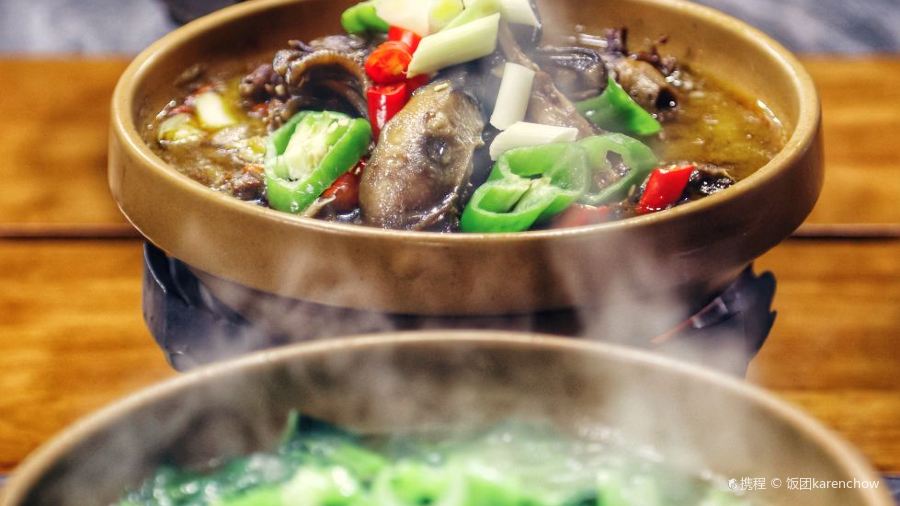

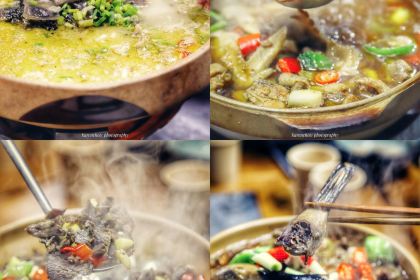
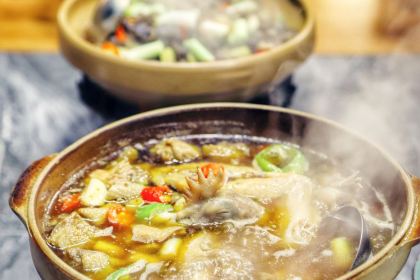
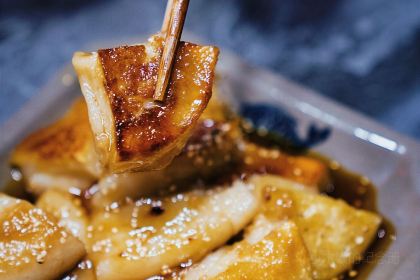
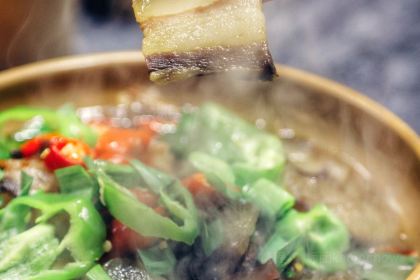
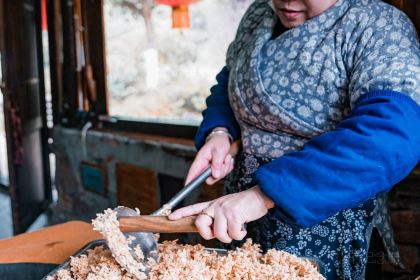
More
Open Now|09:00-21:00Show more
湖南省常德市桃源县桃花源镇319国道附近桃花源景区内
 小木板的纪念册Whenever you travel to a place, you must try the local specialties. Before coming to Changde Taohuayuan this time, I heard that there is a food culture that has been passed down for thousands of years. This is the tea culture with Taohuayuan Leicha as the mainstream.
Speaking of thousands of years, it is because Changde, which has a profound cultural heritage, has been rich in tea since the Qin and Han Dynasties. The history of tea culture is long and has gradually formed a tea culture with Taohuayuan Leicha as the mainstream.
🌈About Changde Leicha
Authentic Leicha is produced in Changde, and Changde Leicha originates from Taohuayuan. "Changde Leicha" is made of local Taoyuan large-leaf tea, selenium-rich rice, selenium-rich soybeans, etc. as the main ingredients, and ginger, peanuts, sesame, salt, etc. as auxiliary materials. It adheres to the unique ancient production process and is processed through traditional processes such as material selection, preparation, frying, crushing (beating), blending, and homogenization.
🔆Classification of Lei Cha
"Changde Lei Cha" mainly includes "clear water Lei Cha", "muddy Lei Cha" and "flavored Lei Cha".
👉Recommended restaurant: Yuxianju
When visiting Taohuayuan, we came to the restaurant in the scenic area-Yuxianju, which is located near Qin Valley in the scenic area and is a must-visit place for sightseeing.
🌟Highlights:
1⃣Lei Cha
In this store, I finally tasted the legendary Lei Cha. This time I tasted sweet Lei Cha, which was not very thick, with a light ginger flavor, sprinkled with a lot of fried rice, and the taste was really great.
2⃣Hunan hot pot
Hunan hot pot is a pot dish. The preliminarily cooked ingredients are served in a ceramic stewing pot, casserole or small metal pot, served on a small stove, and eaten while cooking. In the damp and cold Hunan in winter, there is nothing more comfortable than sitting at a long table filled with pots of chicken, duck, fish and meat, simmering over low heat and having a warm meal.
小木板的纪念册Whenever you travel to a place, you must try the local specialties. Before coming to Changde Taohuayuan this time, I heard that there is a food culture that has been passed down for thousands of years. This is the tea culture with Taohuayuan Leicha as the mainstream.
Speaking of thousands of years, it is because Changde, which has a profound cultural heritage, has been rich in tea since the Qin and Han Dynasties. The history of tea culture is long and has gradually formed a tea culture with Taohuayuan Leicha as the mainstream.
🌈About Changde Leicha
Authentic Leicha is produced in Changde, and Changde Leicha originates from Taohuayuan. "Changde Leicha" is made of local Taoyuan large-leaf tea, selenium-rich rice, selenium-rich soybeans, etc. as the main ingredients, and ginger, peanuts, sesame, salt, etc. as auxiliary materials. It adheres to the unique ancient production process and is processed through traditional processes such as material selection, preparation, frying, crushing (beating), blending, and homogenization.
🔆Classification of Lei Cha
"Changde Lei Cha" mainly includes "clear water Lei Cha", "muddy Lei Cha" and "flavored Lei Cha".
👉Recommended restaurant: Yuxianju
When visiting Taohuayuan, we came to the restaurant in the scenic area-Yuxianju, which is located near Qin Valley in the scenic area and is a must-visit place for sightseeing.
🌟Highlights:
1⃣Lei Cha
In this store, I finally tasted the legendary Lei Cha. This time I tasted sweet Lei Cha, which was not very thick, with a light ginger flavor, sprinkled with a lot of fried rice, and the taste was really great.
2⃣Hunan hot pot
Hunan hot pot is a pot dish. The preliminarily cooked ingredients are served in a ceramic stewing pot, casserole or small metal pot, served on a small stove, and eaten while cooking. In the damp and cold Hunan in winter, there is nothing more comfortable than sitting at a long table filled with pots of chicken, duck, fish and meat, simmering over low heat and having a warm meal.Reviews of 渔仙居餐厅
Some reviews may have been translated by Google Translate
0/5
All (2)
Latest
Photo reviews (2)
Whenever you travel to a place, you must try the local specialties. Before coming to Changde Taohuayuan this time, I heard that there is a food culture that has been passed down for thousands of years. This is the tea culture with Taohuayuan Leicha as the mainstream. Speaking of thousands of years, it is because Changde, which has a profound cultural heritage, has been rich in tea since the Qin and Han Dynasties. The history of tea culture is long and has gradually formed a tea culture with Taohuayuan Leicha as the mainstream. 🌈About Changde Leicha Authentic Leicha is produced in Changde, and Changde Leicha originates from Taohuayuan. "Changde Leicha" is made of local Taoyuan large-leaf tea, selenium-rich rice, selenium-rich soybeans, etc. as the main ingredients, and ginger, peanuts, sesame, salt, etc. as auxiliary materials. It adheres to the unique ancient production process and is processed through traditional processes such as material selection, preparation, frying, crushing (beating), blending, and homogenization. 🔆Classification of Lei Cha "Changde Lei Cha" mainly includes "clear water Lei Cha", "muddy Lei Cha" and "flavored Lei Cha". 👉Recommended restaurant: Yuxianju When visiting Taohuayuan, we came to the restaurant in the scenic area-Yuxianju, which is located near Qin Valley in the scenic area and is a must-visit place for sightseeing. 🌟Highlights: 1⃣Lei Cha In this store, I finally tasted the legendary Lei Cha. This time I tasted sweet Lei Cha, which was not very thick, with a light ginger flavor, sprinkled with a lot of fried rice, and the taste was really great. 2⃣Hunan hot pot Hunan hot pot is a pot dish. The preliminarily cooked ingredients are served in a ceramic stewing pot, casserole or small metal pot, served on a small stove, and eaten while cooking. In the damp and cold Hunan in winter, there is nothing more comfortable than sitting at a long table filled with pots of chicken, duck, fish and meat, simmering over low heat and having a warm meal.
Bowl dishes, a traditional Hunan dish, are also a must-eat dish in Changde. The so-called bowl dishes are actually similar to Guangzhou's casserole pot and hot pot. They combine cooking utensils and tableware into one, and the carrier is a casserole. Bowl dishes are eaten while cooking to keep the temperature of the dishes. Especially in the cold and wet winter in Hunan, it is particularly happy to be able to eat a table of bowl dishes. . This Yuxianju is located in the Taoyuan scenic area. It mainly serves bowl dishes. We ordered 6 pots, including duck, chicken, fish, beef, bacon, bamboo shoots, and green vegetables. It is particularly exciting to eat while cooking hot, which instantly eliminates our coldness. Among them, my personal favorite is beef, which is a bit like beef jerky and tastes very fragrant, followed by fish and chicken. Duck is actually not bad but has more bones. Of course, bamboo shoots are also good and crisp. . For stir-fried dishes, we ordered rice dishes, stir-fried pork with peppers, and stir-fried eggs with peppers. I recommend stir-fried pork with peppers the most, which is very fragrant and delicious. It's strange that the level of stir-fried pork in Hunan is very good. . The glutinous rice cake is also delicious and very sticky. The lei cha here is sweet, and the crispy rice flower is very fragrant. Compared with the salty one, I prefer the sweet one. . Recommendation index: ❤️❤️❤️❤️ Address: Inside Taohuayuan Scenic Area